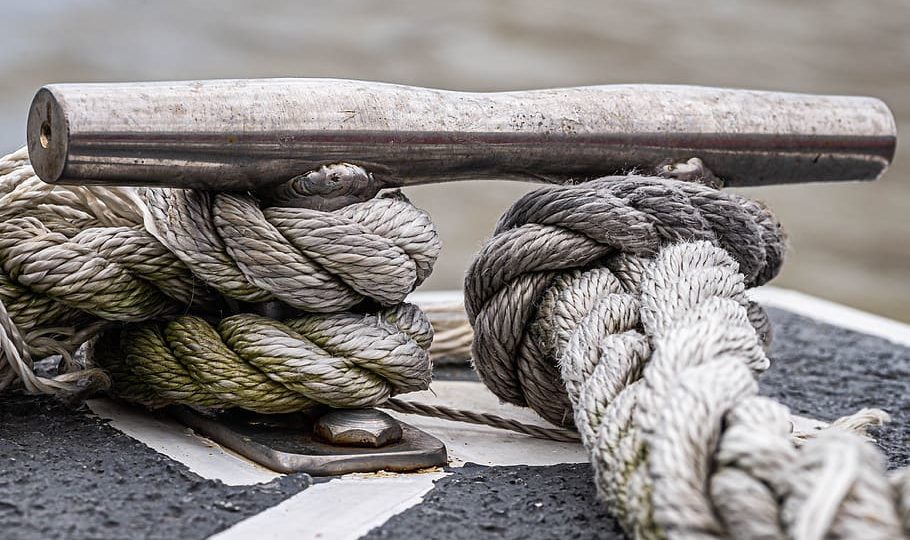The 6 Most Important Sailing Knots
A good knot is a secure one, with excellent holding power. It should also come untied quickly so that the line can be used. There are many knots used in sailing, but these six common, easy-to-tie, and important sailing knots will handle most, if not all, of your needs. Learn the knots well because an improperly tied knot is useless or worse.
Here Are The Most Important and Common Sailing Knots
The Bowline (BOE-lin)
This knot puts a non-slipping loop at the end of a line. The knot becomes more secure under pressure but remains easy to untie. It is the most commonly used knot on sailboats and to tie to a ring or post. Among its many applications, the bowline is used to attach the jib sheets to the clew of the jib. One distinctive feature of a Bowline is that the more load it has, the tighter it holds.
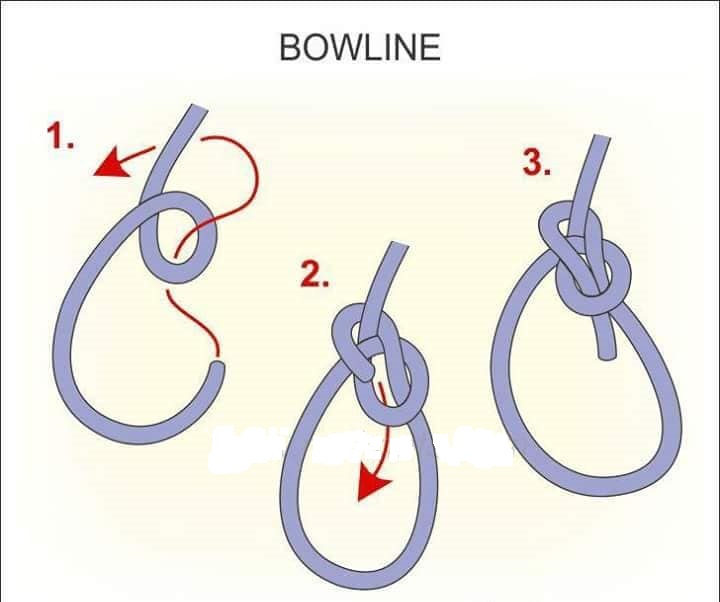
Here Is How To Tie a Bowline
- To tie a bowline, put a small loop in the line where you want the knot to be. Make sure the end crosses on top of the standing part of the line. This small loop will end up as part of the knot.
- Run the end up through the loop you just made, down behind the standing part, back up over the edge of the loop, and down through the loop again.
- Snug the knot together, making sure the knot holds, and the remaining loop does not slip.
Figure-8 Knot
Often called and a stopper knot, this knot looks like its name. It is tied on the end of a line to keep the line from slipping through a fitting. It is easy to untie, and it is usually used on the ends of the jib sheets in the cockpit.
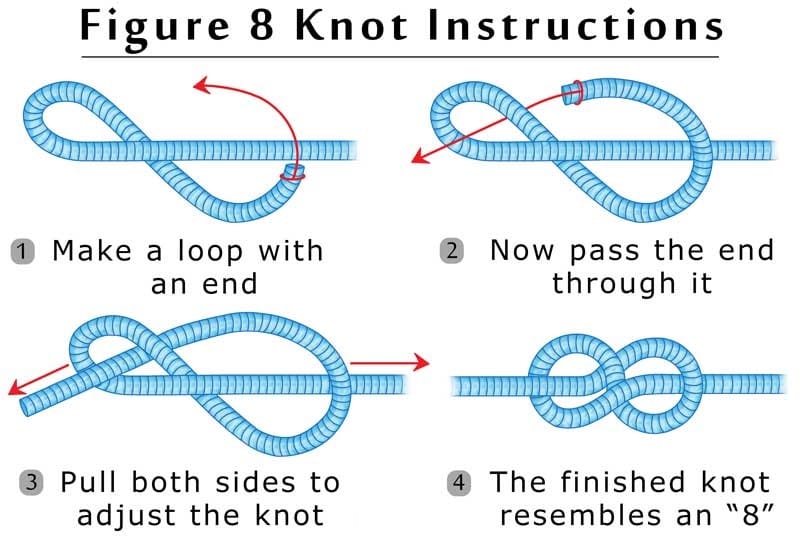
Here Is How To Tie a Figure-8 Knot
- Pass the end over the standing part.
- Cross the end back under the standing part
- Bring the end down through the loop. Tighten the knot.
Square Knot
Also called a reef knot, this is a multi-purpose knot. It is often used to tie two lines of the same diameter together. Moreover, it is usually used in reefing the Mainsail. In making a Square/Reef Knot, just keep this rule in mind: left over right, right over left. This knot is not recommended for tying two lines together because it can be difficult to untie. It is used mainly for sail lashings.
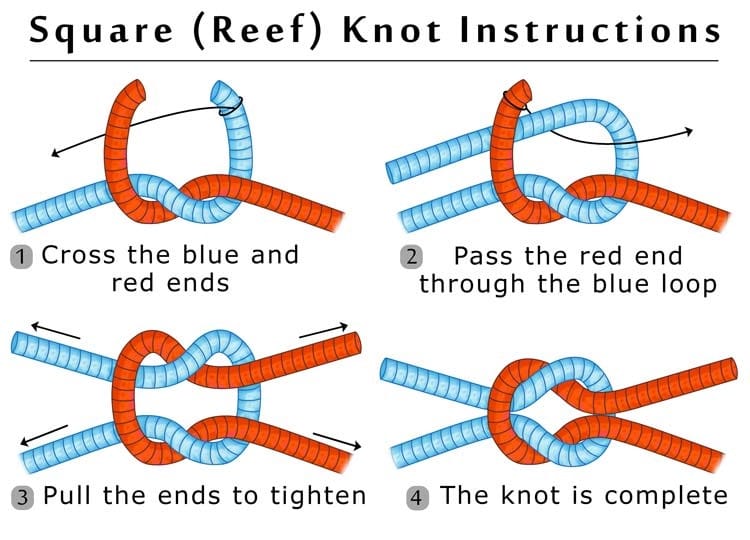
Here Is How To Tie a Square Knot
- Cross the line from the right over the line at the left.
- Loop the Working part of each line around. The new Working end at the left should pass over the Working end at the right.
- Pull on both Working ends to tighten the knot. The end result should be a symmetrical knot that resembles a square.
Sheet Bend
A sheet bend is used to tie two different sized lines together. It looks like a bowline, and it is secure and easy to untie. When tying Lines of different diameter, make the loop in the thicker line.
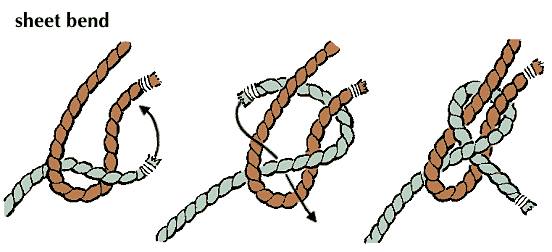
Here Is How To Tie a Sheet Bend
- Make a loop at the end of the smaller line, with the end crossing over on top. Run the larger line up through the loop.
- Run the larger line down around the standing part of the smaller line, up over the edge of the loop, and down through the loop again
- Tighten the knot.
Clove Hitch
A clove hitch is used to tie a line to an object. It is not a very secure knot. It is very easily untied and, with an extra half-hitch, can be used to secure a tiller.
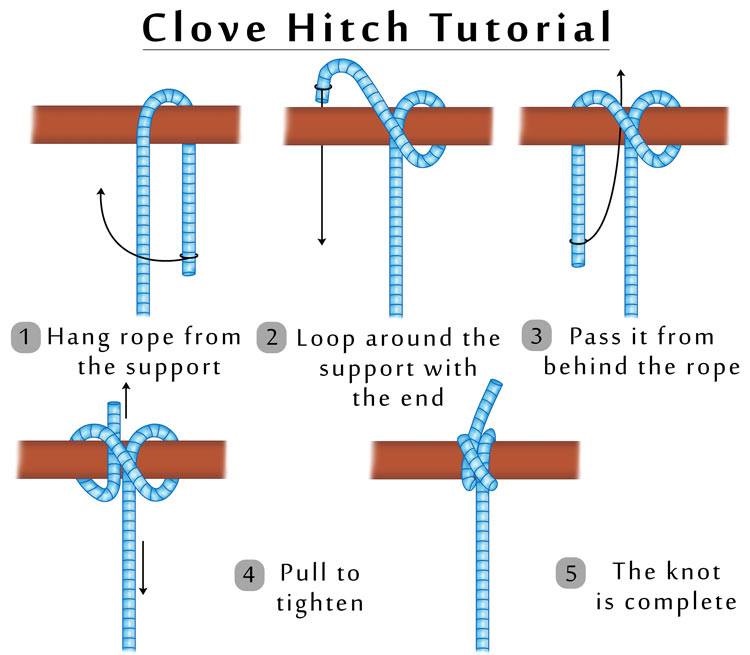
Here Is How To Tie a Clove Hitch
- Wrap a loop of the end around the object.
- Cross over the standing part and wrap a second loop around the object.
- Tuck the end under the crossing you just made and tighten.
Round Turn and Two Half-Hitches
This knot should use a loop to secure a line to an object.
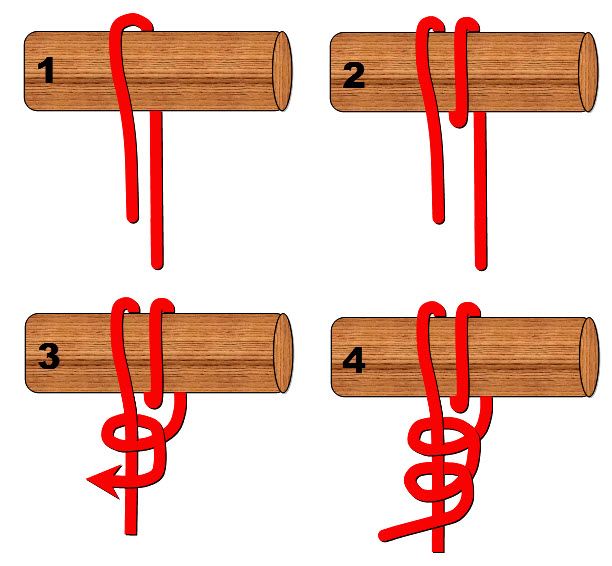
Here Is How To Tie a Round Turn and Two Half-Hitches
- Wrap the end of the line twice around the object.
- Cross the end over the outside of the standing part.
- Use the end to tie two half-hitches onto the standing part.
Most Common Sailing Knots – Summary
In Sailing, there are many knots that come in a variety of features and purposes. Sailing Knots are useful in various situations, such as joining two Sailing Lines, tying up to a piling or post, or securing a Sailboat.
